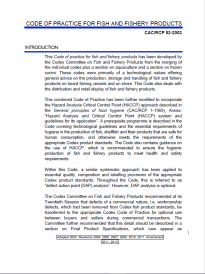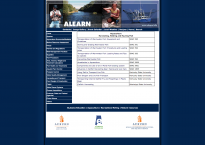Application of Appropriate Technology for Live Fish & Shellfish Transport
Technology solutions associated with controlling food loss and waste (FLW) during live transport centre on capture/harvesting, live product holding facilities, and maintaining water quality and temperature conditions as well as packaging used. Technology used is influenced by the species, transport method, and duration of transport.
Capture
Capture
What happens to fish during capture is as important as what happens to them during transport. Line fishing and trapping minimize the damage to fish and hence the risk of mortality. The time the fish are left in the fishing gear should be minimized. Damage to skin and scales must be minimized. The fish must be placed in well oxygenated water immediately after capture. Holding tanks should be supplied with pumped seawater which can ensure oxygenated water is supplied when the boat is stationary. Holding cages (coffs) must be made from materials which minimize damage to the fish such as mesh commonly used in the aquaculture sector.
Barotrauma, where the swim bladder expands due to changing pressure as the fish are moved from deep to shallow water, is a key cause of mortality of high-value reef fish. Fishers must make choices as to where fishing takes place with the understanding that shallower waters will mean a reduced risk of mortality.
Harvesting
Harvesting
Before harvesting aquaculture fish there are a few things to consider. Fish must be in good health and good condition before they are harvested particularly if they are to be marked live. Fish in poor condition are more likely to die during transport.
Another key pre-harvest issue which influences FLW after harvest is whether fish have been purged/starved prior to harvesting. It is important to withhold food from fish before harvesting or live transport, for at least 1 to 3 days, or more, depending on species. Fish with empty stomachs are able to withstand transportation better, will not regurgitate food in the transport unit and will produce less metabolic waste that leads to water quality deterioration.
Several methods can be used to harvest fish efficiently and safely, but careful planning is required for a successful harvesting operation. Harvesting logistics should always be considered in the design and construction of aquaculture facilities, e.g. pond design and location of cages. Although no immediate signs of FLW may be seen during and immediately after harvesting, what happens during harvesting can have an impact on quality and mortality of live fish further down the value chain. So, getting harvesting right is important for FLW control.
Live Storage and Transport
Live Storage and Transport
To minimize FLW, especially mortality of live fish, the following are some good practices:
- After fish are harvested, carefully remove debris and give fish a resting period of several hours before they are handled again
- Slowly acclimatize the fish to the expected transport water temperature and avoid temperature shock
- Ensure proper filtration for holding tanks
- Circular holding tanks ensure good circulation of water and must have drainage
- Chronic fish losses or weak fish problems are often associated with handling and transporting freshwater fish in water of inadequate hardness. Ensure the water used has the right hardness and apply any allowed chemicals to the water according to legislation and best practice
- Carbon dioxide will accumulate in water during holding and transport, but high oxygen levels, air circulation and water agitation will help reduce any adverse effects
- Starving fish before transport, using clean water, and lowering the water temperature all help reduce ammonia build up which is harmful
- Load fish carefully into transport units
- Increase the oxygen supply while fish are being loaded
- Regularly check dissolved oxygen (DO) in water to assure adequate concentrations. An oxygen meter or test kit is important for measuring oxygen concentrations in transport and receiving waters. Oxygen levels and water temperature can be monitored easily by using an oxygen meter
- A variety of methods can aerate water. Because fish are densely crowded and excited especially after loading, it is essential to have an aeration system that provides adequate dissolved oxygen (DO) rapidly and efficiently. For most cases, always maintain oxygen concentrations above 6 parts per million (ppm)
- Electric agitators or air blowers are commonly used to enhance carbon dioxide removal and aerate live fish transport tanks. While these devices are practical and readily available, they can have some disadvantages: high initial investment, possible equipment or power failure, and may cause water temperature to rise more rapidly during transport. An alternative is the use of pure oxygen gas. There are several advantages with this method: equipment can be leased; there is little chance of equipment failure; it may reduce water temperature slightly; water turbulence is limited; and loading rates can be increased by 25%
- Ensure there is an emergency backup power supply in case the main supply fails
Chilling Water
Chilling Water
Lowering the temperature of the water used for transporting fish has a sedative effect and can minimize fish metabolism and movement. Fish can go into a form of hibernation. This is known to reduce the risk of mortality. The temperature of the water will obviously vary according to species.
Packaging for Air Transport
Packaging for Air Transport
All packaging used for air transport of fish must be approved by the airlines concerned. The fish are typically transported inside plastic bags filled with oxygen and chilled clean water. These bags are in turn placed in a secure outer box, e.g. polystyrene. Although a simple and practical approach, the spines from fish may puncture the plastic bag leading to mortality and poor handling of the boxes can lead to damage leakage.
Technology in Practice: Mud Crab Case Study
Technology in Practice: Mud Crab Case Study
In Madagascar a value chain analysis highlighted the limited value chain efficiencies due to the high mortality rate of crabs and identified the critical stages in the chain where this was happening: at storage points at village level and during transportation. A deeper post-harvest loss assessment confirmed that inappropriate handling practices and inadequate equipment are the main causes of crab mortality along collection channels. FLW interventions consisted of a combination of awareness raising activities and direct on-the-job capacity building of mud crab fishers, collectors and other operators through the promotion of improved, but simple, crab storage and transport equipment. Solutions also included the construction of fixed cages, pens in tidal areas, and storage sheds in villages constructed from local materials. In addition, the carts and pirogues were upgraded, utilizing storage shelves and boxes rather than fragile baskets, which prevented crabs from being crushed.
Technology in Practice: Innovative Ocean Container Transport of Live Lobsters Case Study
Technology in Practice: Innovative Ocean Container Transport of Live Lobsters Case Study
CMA CGM Group introduced a new generation of ocean container, called AQUAVIVA, which is designed to transport live lobsters in their original water conditions to maintain their natural habitat. Previously, lobsters were carried either frozen by ocean transport or alive and on ice by airfreight. With AQUAVIVA, the lobsters are carried in optimal conditions during the entire transportation process in their original water, from the fishing area until arrival at the wholesaler or restaurant.
Key Publications
Development of Live Fish Transport Techniques This report provides details of various aspects of live fish transport in three main areas: 1. Capture and pre-transport maintenance, 2. Packaging and live transport, 3. Post-transport maintenance. | |
Global standard that presents information on freezing and cold storage practices which aim to reduce spoilage and waste. | |
Extension information on various good harvesting and post-harvesting handling practices for aquaculture. |
More Resources
More Resources
31 October 2023
01 January 2018














